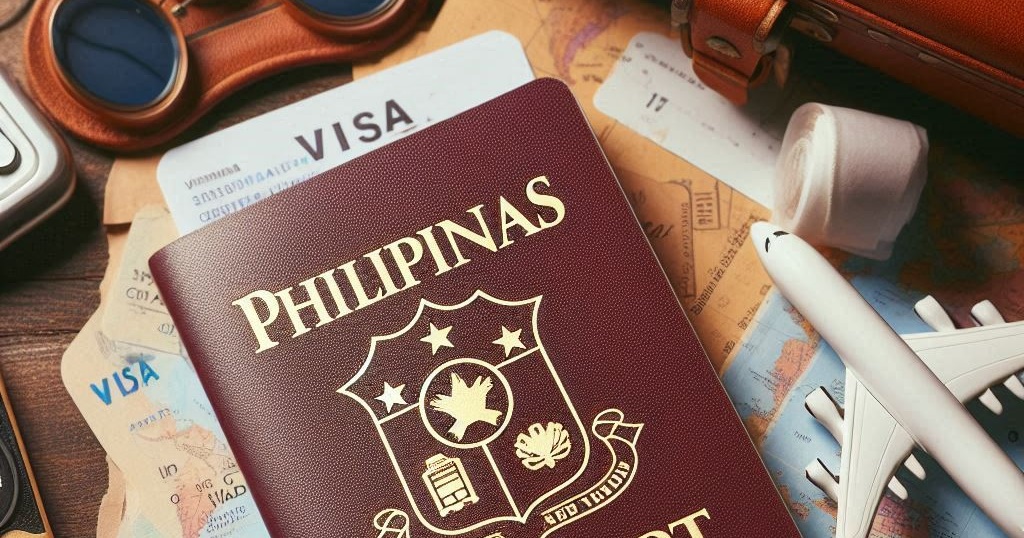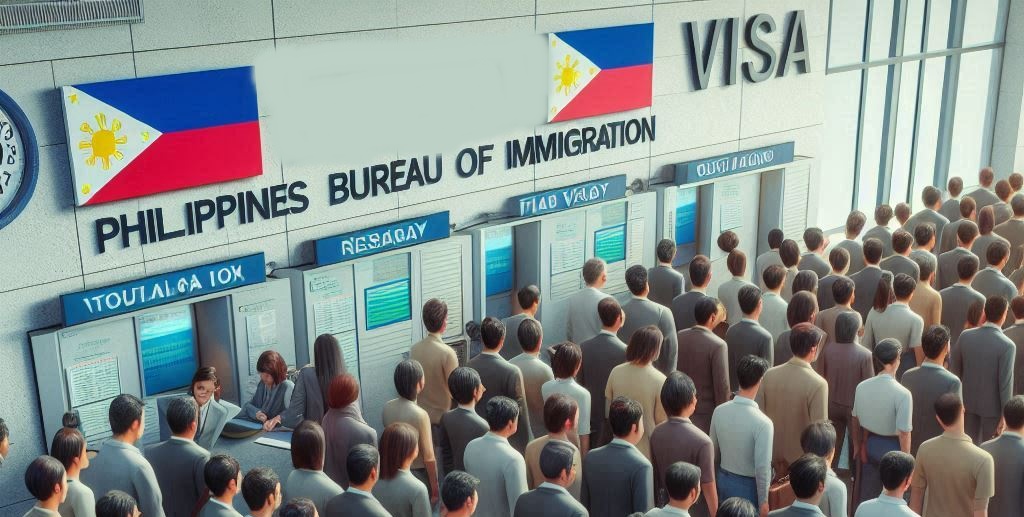Understanding the Philippine 13a Visa: A Comprehensive Guide

A 13A Visa in the Philippines is completely different from a Visa credit card!
If you’ve decided to immigrate to the Philippines and are validly married to a Filipino, you’ve likely come across the Philippine 13a visa which is a common avenue to residence in the Philippines.
I’ll explain this Filipino visa in more detail in the below article, discussing such things as:
- What is a13a visa in the Philippines?
- Who the is eligible for a 13a visa in the Philippines
- How to apply for a 13a Filipino visa, including a list of 13a filipino visa requirements
- Benefits of a 13a Visa in the Philippines
- Challenges and Considerations to a 13a Visa in the Philippines
- FAQs on the 13a Visa in the Philippines
Contents
- What is a 13a Visa in the Philippines?
- Who is Eligible for the 13a Visa in the Philippines?
- Temporary vs. Permanent 13a Visa in the Philippines
- How to apply for a 13a Filipino visa
- Benefits of the 13a Visa in the Philippines
- Challenges and Considerations to a 13a Visa in the Philippines
- Conclusions regarding the 13a Visa in the Philippines
- Frequently Asked Questions for a 13a visa in the Philippines
What is a 13a Visa in the Philippines?

A 13A Visa in the Philippines is also known as Immigrant Visa by Marriage
A 13a visa in the Philippines is a resident visa issued to foreign nationals who are legally married to Filipino citizens. It allows the holder to reside permanently in the country. It also allows the holder to work in the Philippines.
The main advantage of the 13a visa in the Philippines over other visas is its long-term validity as it removes the need to frequently renew visas. Once granted, the visa allows multiple entries into and out of the Philippines, providing flexibility for expats who may need to travel frequently.
Who is Eligible for the 13a Visa in the Philippines?

A valid marriage of a foreigner to a Filipino is the ultimate requirement for the 13a Visa in the Philippines
To be eligible for the 13a visa in the Philippines, you must meet the following requirements:
- Marriage to a Filipino citizen: The applicant must be legally married to a Filipino citizen. The marriage must be recognized under Philippine law.
- Reciprocity from the Foreign Country of Origin: The foreign national must come from a country that has a reciprocity agreement with the Philippines, which also grants immigration rights and permanent residence to Filipinos. If your country does not have a reciprocity agreement with the Philippines, you can try for a Temporary Resident Visa.
- Good moral character: The foreign spouse must possess good moral character, and must have a clean record with local or international law enforcement agency.
- Health requirements: The applicant must pass a medical examination to ensure that he or she is of good health.
- Financial capacity: The applicant and their Filipino spouse must be able to demonstrate financial capacity to support themselves.
The 13a visa in the Philippines also allows unmarried dependents under 21 years of age to apply for this type of filipino visa, and must present proof of blood relationship with the applicant.
The 13a visa in the Philippines is designed to allow family to be together with less bureaucracy and is much better than using tourist visas or other short-term permits. It provides a more permanent solution for couples who intend to live in the Philippines long-term.
Temporary vs. Permanent 13a Visa in the Philippines

A foreigner can stay in the Philippines using a tourist Visa while the 13a Visa in the Philippines is being processed
The 13a visa in the Philippines is first issued as a temporary resident visa, valid for one year.
After this period, the applicant can apply for the permanent resident status. During the first year, the Bureau of Immigration evaluates whether the foreign national and their Filipino spouse continue to meet the conditions of the visa. If all goes well, the applicant is then granted permanent residency.
The process of transitioning from a temporary to a permanent 13a visa in the Philippines requires that you continue to meet the same eligibility requirements, particularly in terms of the marriage relationship and financial stability.
How to apply for a 13a Filipino visa

A person with 13a Visa in the Philippines is exempted from Alien Employment Permit. Meaning, he can work and conduct business in the Philippines with only the 13a Visa
The application for the 13a visa in the Philippines can be done either in the Philippines or through a Philippine embassy or consulate if the applicant is abroad.
It is generally advisable to apply from within the Philippines, as the coordination between the Philippine Department of Foreign Affairs and the Bureau of Immigration can be slow.
Additionally, it is better to present more than strictly specified by the13a Filipino visa requirements as that further strengthens your case.
Below is a step-by-step guide to applying for the 13a visa in the Philippines.
1. Gathering 13a Filipino visa requirements
While below are the minimum 13 Filipino visa requirements, it is advisable to prepare more than the bare minimum. For example, you may add property titles as proof of financial capability. In terms of documents for a 13a visa in the Philippines, the more you have the better.
- A joint letter request to the Commissioner of the Bureau of Immigration
- 2 copies of a correctly accomplished 13a visa in the Philippines application form
- 2 copies and the original passports with at least a year’s validity of the Filipino and foreign spouse
- 4 pieces of 2” x 2” sized ID photos taken in the last 6 months and signed
- A certified true copy of your marriage certificate and apostilled, if the ceremony was preformed abroad
- Birth certificate of the Filipino spouse, apostilled if applicable
- Birth certificate of the applicant, apostilled
- Police clearance from the applicant’s country of origin or NBI clearance if in the Philippines
- Bureau of Immigration clearance if applying from the Philippines which must have been retrieved in the last 6 months
- Proof of financial capacity (bank statements, employment records, etc.).
- A medical certificate signed by a licensed doctor in the country of residence with a chest x-ray, stool test, urinalysis and CBC
Dependents have many of the same requirements and are also asked to submit proofs of identity such as their Birth Certificate. If the minor child cannot support himself, then a notarized Affidavit of Financial Support must be also be executed by both spouses.
2. Submit your application
You can submit your 13a visa in the Philippines application at the Philippine embassy or at one of the branches of the Bureau of Immigration, if you are already in the country.
Generally, you will be interviewed, fingerprinted and asked to pay processing fees. These fees vary depending on whether you’ve submitted your application for your 13a visa in the Philippines or abroad.
Then, there is a waiting period of some weeks to months depending on the completeness of the Filipino visa requirements, which is why it is best to add as many supporting documents as possible.
Be prepared for this period to extend due to the voluminous requests that the BI takes. It is not uncommon for it to extend to 6 months or more, especially if there is some deficiency found in your Filipino visa requirements in terms of documents or information.
3. Issuance of the 13a Visa in the Philippines
Upon approval of your 13a visa in the Philippines, the visa will be issued, either as a sticker affixed to your passport or as a separate document.
You will also then receive an ACR card, which is a very important document that should allow you to open a bank account and is required for many other official transactions.
Benefits of the 13a Visa in the Philippines

Unmarried children of a Filipino under 21 years old can also apply for a 13a Visa in the Philippines
The 13a visa in the Philippines holds several advantages over other Filipino visas as it allows travel, residency and access to Philippine public services.
- Permanent Residency: The primary advantage of the 13a visa in the Philippines is the opportunity for permanent residency, allowing you to live indefinitely in the country without the need for constant visa renewals. The first year is a probationary year after which you can apply for the permanent 13a
- Multiple Entries: The 13a visa in the Philippines allows for multiple entries, meaning that visa holders can leave and re-enter the country as often as they like.
- Work Rights: Aside from residence and freedom of travel, the 13a visa in the Philippines allows you to be employed or even start a business.
- Access to Benefits: A 13a visa in the Philippines enables the holder access to Philippine public services and healthcare.
Challenges and Considerations to a 13a Visa in the Philippines

A foreigner with 13a Visa in the Philippines must report to the bureau of immigration if he/she is going to change his/her residence.
While the 13a visa in the Philippines offers significant advantages, there are also some challenges and considerations to keep in mind.
- Annual Reporting: Even after obtaining permanent residency through the 13a visa in the Philippines, you are required to report annually to the Bureau of Immigration. This is a straightforward process but one that you must not neglect.
- Marriage Must Be Valid: The validity of the 13a visa in the Philippines hinges on your marriage to a Filipino citizen. If the marriage ends, the foreign national may lose the right to reside in the country under this visa and may need to transition to another visa.
- Bureaucratic Processes: Even when documents are complete, processing a 13a visa in the Philippines involves a lot of work and several documents. Be prepared for delays.
Conclusions regarding the 13a Visa in the Philippines

Getting a 13a Visa in the Philippines may be very challenging , but it can be very rewarding once successful
The 13a visa in the Philippines is the best option for those immigrating to the Philippines with a Filipino spouse. It allows multi-entry exit and entrance to the Philippines and permanent residency. It also allows access to public services.
Be patient while applying for your 13a visa in the Philippines. The Philippines is very bureaucratic and requires the exact document submitted, sometimes leading to unnecessary delays. Additionally, processing can be slow due to the volume of requests received. Prepare as many documents as possible to strengthen your case. Also apply from within the Philippines if you can, as this may help shorten the timeline.
While it is possible to do this yourself, it is also possible to hire a representative to do this for you.
Contact us here for more information.
Frequently Asked Questions for a 13a visa in the Philippines

These are the frequently asked questions about the 13a Visa in the Philippines
1. Can I work in the Philippines with a 13a visa?
Yes, the 13a visa in the Philippines allows the holder to engage in lawful employment or establish a business in the country.
2. Can my children apply for the 13a visa in the Philippines?
The 13a visa in the Philippines is specifically for foreign nationals who are married to Filipino citizens and unmarried dependents under 21. If the child is married or is over 21 other types of visas may be applicable.
3. What happens if my marriage ends?
If your marriage legally ends, the 13a visa in the Philippines can be revoked. In such cases, the foreign national may be required to leave the country or apply for another type of visa such as a tourist visa.
4. Can I apply for a 13a visa in the Philippines directly from a 9g work visa or other work permit?
No, you cannot directly apply for a 13a visa from a 9g work visa.
If you have a work visa and want to file for an immigrant visa in the Philippines, you will need to first downgrade the work visa to a tourist visa and then apply for a 13a visa in Philippines.
5. How long does it take to get a 13a visa in the Philippines?
If you apply for a 13a visa in the Philippines, the processing time may take 3 months or more.
However, if you have applied from abroad, the processing time may be longer due to the additional coordination required from the DFA and the BI to process the Filipino visa.
6. Can I have a representative file for a 13a visa in the Philippines on my behalf?
Yes, you can either file it personally or authorize a representative to file it on your behalf.
If you ask a representative to file on your behalf, you will need to provide a Special Power of Attorney so that they are properly authorized.






0 Comments